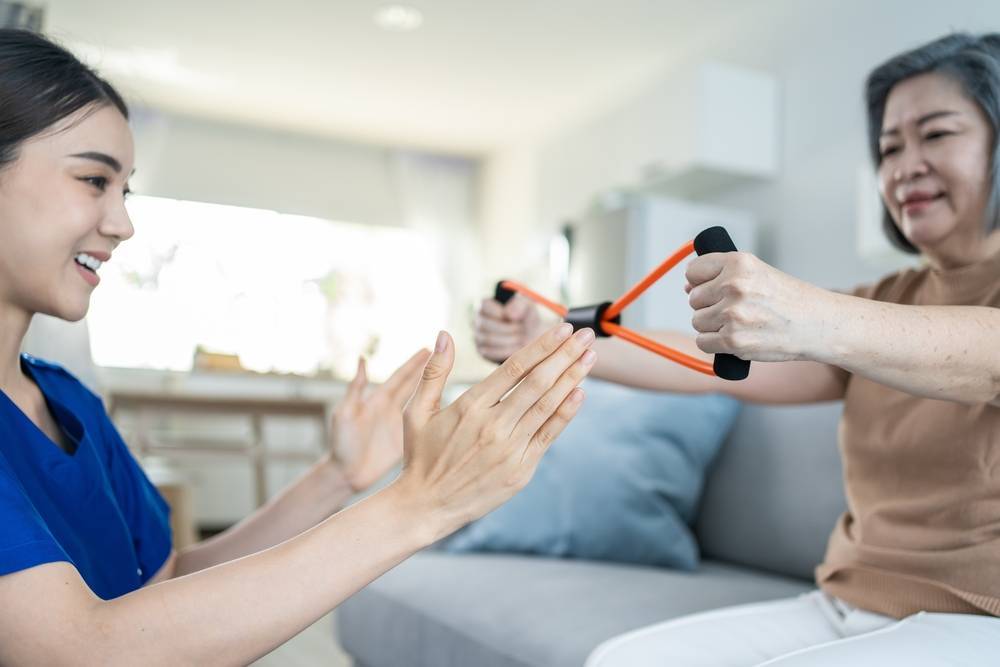Get the best help for Osteoarthritis with the guidance of physiotherapists – #WorldPTDay
World Physiotherapy Day (World PT Day) happens every year on 8 Sep. This day honours the important role of physiotherapy and physiotherapists in the community.
During this day, the global community of physiotherapists (31 out of 125 countries are from the Middle East, Asia, and the Pacific). Led by World Physiotherapy, these countries come together and organize activities in celebration and support of all physiotherapists around the world. The vision is to campaign for further improvement and innovation in the physiotherapy profession.
For this year’s theme, World PT Day focuses on Osteoarthritis (OA) and the role of physiotherapy and physiotherapists in its management and treatment.
Overview of Osteoarthritis (OA)
Osteoarthritis (OA) is the most common type of arthritis and is often called “wear and tear” arthritis. It is a condition in which the cartilage within a joint begins to break down and bones begin to change. It occurs frequently in the hands, hips, and knees. People who suffer from this condition experience pain and stiffness in their joints that usually get worse as they move. They also experience less flexibility and a decrease in their overall mobility.
OA is considered the 11th leading cause of disability worldwide, and the major cause of disability in Asian countries. Knee and hand OA are the highly prevalent types of OA in Southeast Asia and East Asia. According to World Health Organization (WHO), 18% of women has OA, higher than the estimated 9.6% of men. This condition is less well-known in Asian countries than in Western parts of the world.
The exact cause of OA is still unclear, but risk factors that increase the possibility of having OA are the following:
- ageing
- overweight or obesity
- joint injury or surgery
- overuse of joints
- genetics
- female gender
The prevalence of OA in the Asian region has kept on increasing due to the ageing population and the rising prevalence of obesity.
Unfortunately, there is no definite cure for OA. However, treatments and medications are available to reduce the pain and manage the symptoms. Treatments in line with OA are often associated with exercise and physical therapy, which is best administered, taught and guided by physiotherapists.
How can physiotherapists best help OA patients manage the prevalent symptoms of OA?
Physiotherapists are medical professionals specialized in treating injuries and conditions that directly affect a person’s normal movement. They advise and teach OA patients a series of physiotherapies to restore, improve, and maintain their mobility and overall well-being.
As there is no direct cure for OA, treatments done by physiotherapists are the best ways to manage the symptoms of this condition.
Here are some ways how physiotherapists best manage the risks and symptoms of OA in its patients:
1. Physiotherapists can see and understand OA patients’ overall condition
Before starting any kind of physical training, Physiotherapists first examine and evaluate their patients’ movements and overall mobility by conducting a series of tests. With these tests, physiotherapists can know the patient’s specific condition, including their medical history, allowing them to create and advise treatments best suited for their condition.
2. Physiotherapists can build personalized pieces of training based on OA patients’ needs
Exercise is the best and the most appropriate remedy for all OA patients. These exercises should include local muscle strengthening, normal movement patterns, joint motion, and general physical activities. With the help and guidance of physiotherapists, OA patients will know the best combination of exercises tailored to fit their needs. They will be able to advise OA patients on what specific body part they need to focus on and how they can maximize these exercises for 100% effectiveness. This in return will prevent the waste of time and energy.
3. Physiotherapists can ensure that movements and exercises done by OA patients are safe and effective
Regular exercise and physical movements lower the risk of OA and can prevent the need for surgery. Although there are a lot of exercises that can be done by the OA patients alone, having physiotherapists will make OA patients see how the exercises must be properly and safely done. This will avoid any accidents that may worsen their condition to happen. Most importantly, they can ensure that all prescribed exercises are effective to achieve their desired results – lessen joint stiffness and pain, balanced walk, increased mobility, slow down its progression, etc.
Conclusion
Keeping an active life is the best way to treat OA. Having physiotherapists can help OA patients have more effective and efficient physical exercises and pieces of training. Through physiotherapists’ individualized, safe, and effective pieces of training, OA patients’ overall mobility can be improved and lead to a healthier and happier life.
This month of September, we honour the huge role of physiotherapy and physiotherapists in the medical field and in helping people with mobility problems take on their everyday lives one movement at a time.

